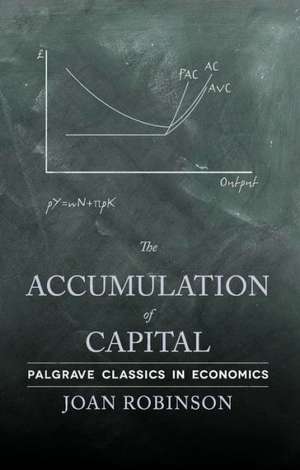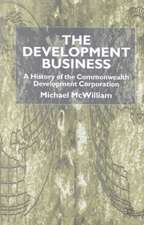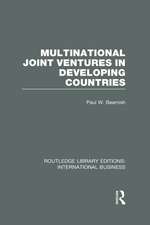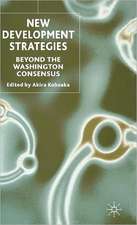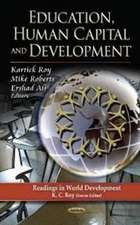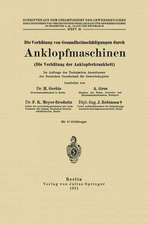The Accumulation of Capital: Palgrave Classics in Economics
Autor J. Robinsonen Limba Engleză Paperback – 29 noi 2013
Preț: 496.01 lei
Nou
Puncte Express: 744
Preț estimativ în valută:
94.91€ • 99.09$ • 78.55£
94.91€ • 99.09$ • 78.55£
Carte tipărită la comandă
Livrare economică 04-18 aprilie
Preluare comenzi: 021 569.72.76
Specificații
ISBN-13: 9780230249325
ISBN-10: 0230249329
Pagini: 488
Ilustrații: XXXVII, 444 p.
Dimensiuni: 140 x 216 x 36 mm
Greutate: 0.61 kg
Ediția:2013
Editura: Palgrave Macmillan UK
Colecția Palgrave Macmillan
Seria Palgrave Classics in Economics
Locul publicării:London, United Kingdom
ISBN-10: 0230249329
Pagini: 488
Ilustrații: XXXVII, 444 p.
Dimensiuni: 140 x 216 x 36 mm
Greutate: 0.61 kg
Ediția:2013
Editura: Palgrave Macmillan UK
Colecția Palgrave Macmillan
Seria Palgrave Classics in Economics
Locul publicării:London, United Kingdom
Cuprins
Foreword Introduction PART I: INTRODUCTION 1. The Classes of Income 2. The Classes of Wealth 3. The Meaning of Money 4. Capital and Income 5. Consumption and Investment 6. The Meaning of Equilibrium PART II: ACCUMULATION IN THE LONG RUN 7. ASimple Model 8. Section I - Accumulation with One Technique 9. Accumulation with Constant Technique 10. Technical Progress 11. Section II - The Technical Frontier 12. The Spectrum of Techniques 13. The Evaluation of Capital 14. The Technical Frontier in a Golden Age 15. Productivity and the Real Capital Ratio 16. Accumulation without Inventions 17. A Surplus of Labour 18. Section III - Accumulation and Technical Progress 19. Accumulation with Neutral Technical Progress 20. Accumulation with Biased Progress 21. Synopsis of the Theory of Accumulation in the Long Run PART III: THE SHORT PERIOD 22. Prices and Profits 23. Wages and Prices 24. Fluctuations in the Rate of Investment 25. Cycles and Trends PART IV: FINANCE 26. Money and Finance 27. The Rates of Interest PART V: THE RENTIER 28. Consumption of Profits 29. Consumption and Accumulation in the Long Run 30. Rentiers and the Trade Cycle 31. Rentiers and Finance PART VI: LAND 32. Land and Labour 33. Factor Ratios and Techniques. A Digression 34. Land and Accumulation 35. Land, Labour and Accumulation 36. Increasing and Diminishing Returns PART VII: RELATIVE PRICES 37. Supply and Demand PART VIII: International Trade 38. External Investment 39. International Investment NOTES ON VARIOUS TOPICS 40. Postscript 41. The Value of Invested Capital
Recenzii
'Classics are classics for a reason. Classics show us that when we flatter ourselves into thinking we have clear title to the ideas we advance, they are really just borrowed from a more eloquent past. Robinson's The Accumulation of Capital shows how difficult it is in economics today to say something that is both new and profound. Her blend of theory and realism is what we all strive for in parsing modern economic problems. Her criticisms of the orthodoxy were enormously productive in that economic methodologies have blossomed to account for inadequacies she pointed out in the equilibrium approach. To Robinson and The Accumulation of Capital we are all deeply indebted, whether we realize it or not.'
Bill Gibson, John Converse Professor of Economics, University of Vermont, USA
'Joan Robinson's most difficult and ambitious book still constitutes a formidable challenge to contemporary theory. Her search for the fundamental but simple principles which underlie the process of growth in a classical Marxian-Kaleckian-Keynesian setting contrasts sharply with the logic and the language of current growth models. Her extraordinary command of logic allowed her to dispense with mathematics, with no loss of clarity and insights. The new Introduction by two leading Robinson scholars provides the thread leading through the labyrinth of case studies and changes in assumptions. It will certainly attract fresh readers to her book, and also lure back those already acquainted with it.'
Maria Cristina Marcuzzo, Professor of Economics, Sapienza, University of Rome, Italy
Bill Gibson, John Converse Professor of Economics, University of Vermont, USA
'Joan Robinson's most difficult and ambitious book still constitutes a formidable challenge to contemporary theory. Her search for the fundamental but simple principles which underlie the process of growth in a classical Marxian-Kaleckian-Keynesian setting contrasts sharply with the logic and the language of current growth models. Her extraordinary command of logic allowed her to dispense with mathematics, with no loss of clarity and insights. The new Introduction by two leading Robinson scholars provides the thread leading through the labyrinth of case studies and changes in assumptions. It will certainly attract fresh readers to her book, and also lure back those already acquainted with it.'
Maria Cristina Marcuzzo, Professor of Economics, Sapienza, University of Rome, Italy
Notă biografică
Joan Violet Robinson (1903 –1983) was an inspirational post-Keynesian economist who was well known for her work on monetary economics, imperfect competition and for fundamental contributions to many other areas of economics. Initially a supporter of the neoclassical school of economics, she became one its fiercest opponents after becoming acquainted with John Maynard Keynes. Joan Robinson was appointed lecturer in economics at the University of Cambridge, UK, in 1937, elected fellow of Newnham College in 1962 and assumed the position of full professor and fellow of Girton College in 1979. She was the first female fellow of Kings College. Joan Robinson's magnus opus The Accumulation of Capital was first published in 1956 and sought to extend Keynes's theory to the long-run issues of growth and capital accumulation.
